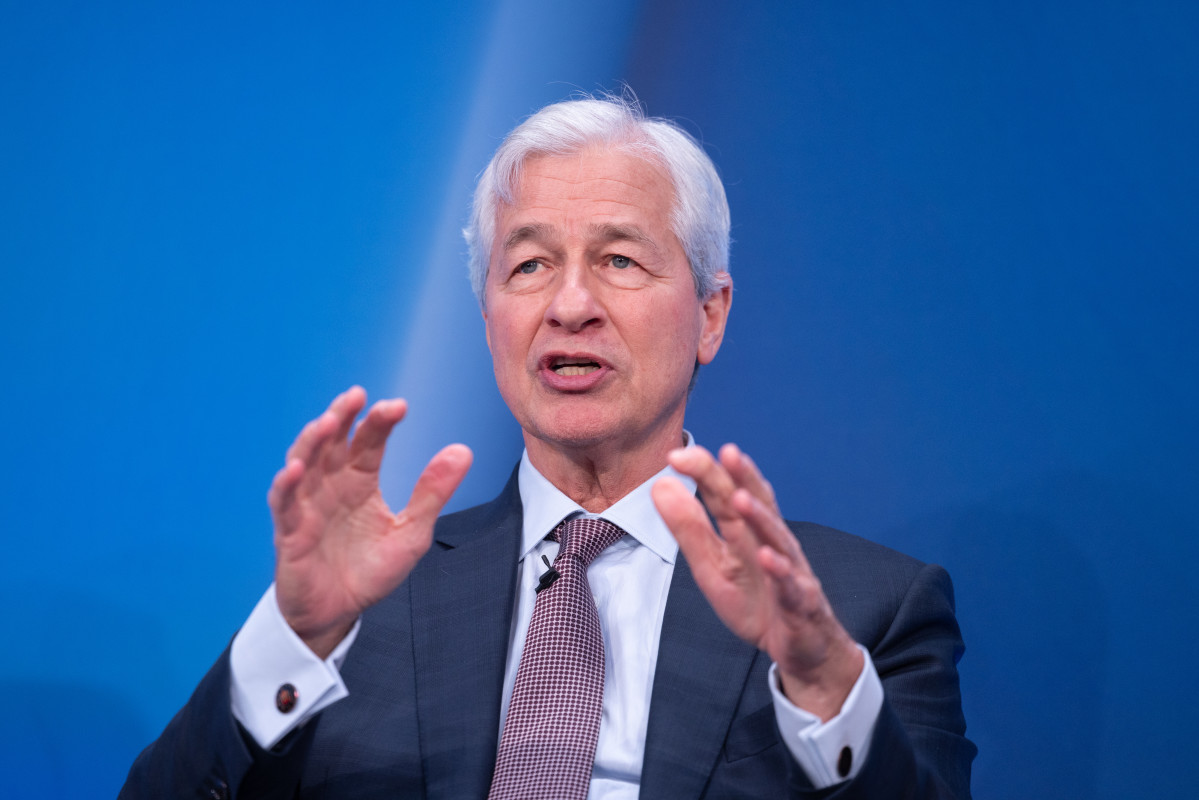AI has transformed business, but in doing so, it has also rewritten the stock market’s leaderboard.
Since 2023, AI-driven megacaps have effectively become trillion-dollar machines, minting record-level gains while dominating the indexes. For a little color, Nvidia’s market cap alone has swelled from $1 trillion to over $4.3 trillion in a little more than two years, positioning it as the face of a market supercycle.
Moreover, this frenzy isn’t confined to public markets.
The Financial Times recently reported that 10 unprofitable AI start-ups added approximately $1 trillion in paper value over the past year. AI has, in essence, pumped multi-trillions into global stock market capitalization, reshaping both perception and pricing power.
Additionally, by October 2025, nearly 50% of the S&P 500’s $57 trillion market value is linked to “AI-exposed” sectors, including cloud and semiconductors, data-center energy, and software monetization.
That’s exactly where Jamie Dimon comes in. The JPMorgan chief just cut through the hype, questioning whether AI stock investors still know what’s real amid what has been a gold rush.

Bloomberg/Getty Images
Jamie Dimon says the AI boom isn’t a bubble, but investors should get picky
JPMorgan Chase CEO Jamie Dimon just dropped a sharp take on the AI frenzy, calling it “real but risky.”
Speaking at Fortune’s Most Powerful Women Summit in Washington, D.C., Dimon said that while AI will “probably pay off,” every project will survive. “You’ve got to go one by one,” he told the audience.
“Some of these things may be in the bubble, but in total, it’ll pay off.”
More Experts
- Dave Ramsey warns Americans on critical Medicare mistake to avoid
- Scott Galloway reveals his aggressive plan for Disney, Bob Iger
- Jim Cramer has 5-word message on government shutdown, stocks
Dimon’s view is blunt and has major implications for AI stock investors.
The JP Morgan head likens the AI revolution to a massive-scale industrial build-out, more “roads, cement, and steel” than a speculative stock play.
The problem, though, is that not every “AI” company gets the power, chips, or capital needed to finish what it started. That means that a significant number of splashy data-center projects may never even reach completion.
Related: Former Intel CEO drops curt 2-word verdict on AI
For investors, Dimon’s takeaway is mostly straightforward, in that it’s wise to avoid chasing every AI ticker. Look for companies with a strong liquidity profile along with clear visibility on power supply, disciplined spending, and real returns.
His message is remarkably pertinent, especially given the narrow and expensive nature of the AI trade over the past few years. Dimon’s advice relates to shifting from story stocks to operators that can actually execute.
Wall Street is divided on whether AI is a bubble or a boom
The debate over the sustainability of the AI trade is heating up, and even the bulls admit the air’s getting a lot thinner.
Goldman Sachs believes that this isn’t a 1999 redux, arguing that real profits back the AI surge of today, not just promises. Robust balance sheets and measurable productivity gains, they say, effectively shield it from “bubble” territory.
Moreover, Morgan Stanley expects AI software sales to reach a whopping $1.1 trillion by 2028, while UBS forecasts AI capital expenditures to reach $375 billion next year, increasing to $500 billion by 2026.
Related: Microsoft drops popular software program after 35 years
Google parent Alphabet and Microsoft are boosting their budgets, with Google alone expected to spend roughly $85 billion in 2025, as they both look to gain more ground on their competitors.
Additionally, Nvidia’s Jensen Huang refers to it as a shift from traditional data centers to “AI factories,” hailing it as more of an industrial transformation than a speculative fad.
However, the skeptics are sounding the alarm.
Barclays notes that AI’s boost to GDP is still relatively modest at just under 1% so far, warning that bottlenecks in power and logistics can drag returns.
Veteran investor Rob Arnott compares Nvidia’s surge to 1999’s mania, while billionaire Jeremy Grantham sees “super-bubble” dynamics taking shape across U.S. stocks.
Even the insiders are hedging. OpenAI’s Sam Altman feels investors are “overexcited,” and Intel’s Pat Gelsinger calls it “a bubble that won’t pop yet.”
Quick takeaways:
- Bulls feel that profits and productivity are keeping AI from bubble status.
- Skeptics are warning that energy limits and valuations could bite.
- Even insiders see hype outrunning execution.
Related: Morgan Stanley revamps Broadcom’s price target with a twist
#Jamie #Dimon #drops #surprising #stocks